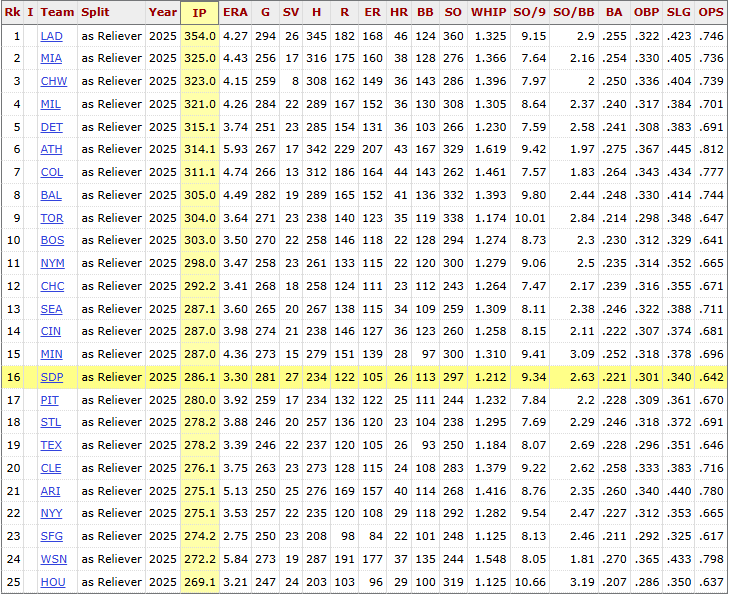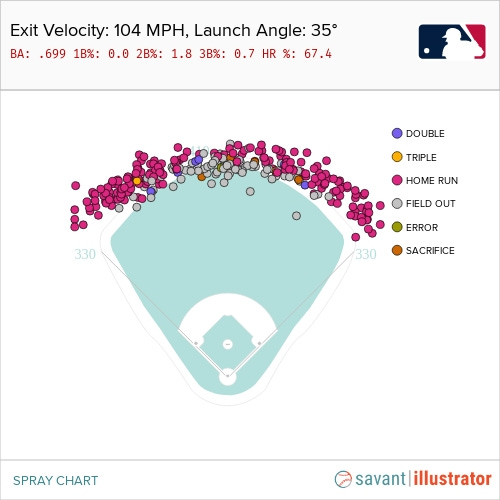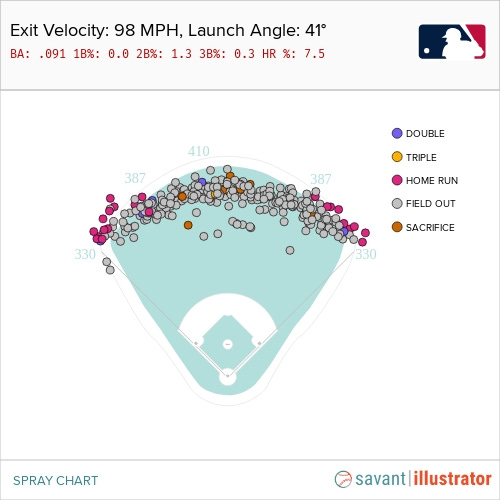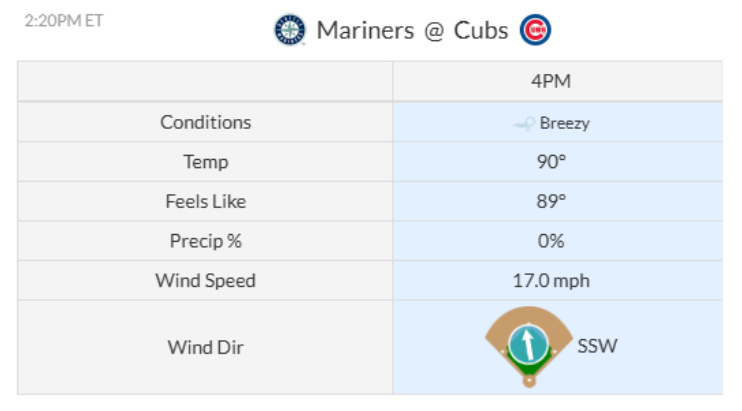The Padres finished the grueling stretch of 26 games in 27 days with their MLB-leading 13th shutout of the season beating the Nationals 1-0 on Wednesday. The win left them with an even 13-13 record over the 26 games. That’s surviving. And it wasn’t easy.
The stretch saw Jackson Merrill complete his second IL stint of the season after suffering a concussion in Arizona June 15th, missing another seven games to bring his season total to 32 games. The Padres played the entire stretch without Michael King who remains sidelined with a nebulous shoulder ailment, and Yu Darvish, who has missed the entire season so far. Ryan Bergert was added to the IL after taking a line drive off the forearm of his throwing arm Tuesday. And Xander Bogaerts missed the final game of the stretch after appearing to aggravate a shoulder injury on this play the night before:
Manny Machado was candid about the toll the 26-game marathon took, saying to Marty Caswell:
I'm exhausted. The competition we played, we played some really good teams & it was mentally draining as much as it was physically.
On the fan side, the stretch evoked the famous Bill James lament:
Baseball is the least deterministic of the major sports. Information about what a team truly is drips in slowly. But the next game the Padres play will mark the official halfway point in the season. And that means that decisions need to be made about addressing structural flaws that have hampered the team to this point. Yet the Padres likely only have a few trade bullets in the chamber. So it’s useful to take stock of what we’ve learned through the first 80 games, and examine what that suggests about where to focus the team’s limited resources in pursuing roster improvement.
Still In It
The Padres are 44-36, 8 games over .500 and tied for the 3rd and final Wild Card playoff spot. They’ve done this largely through good starting pitching and defense, great bullpen performance, and very bad, but nonetheless just-good-enough, offense. The outlook for each of these areas is quite different.
Starting Pitching
Kevin Acee has raised alarm about a looming pitching crisis due to the mounting injuries on the starting pitching front, and the subsequent overtaxing of the bullpen could lead to a late-season swoon, exactly as transpired in 2021. Nick Pivetta is dealing, Dylan Cease had his best start of the year this week, and Randy Vasquez amazingly keeps providing quality outings. But there is just a vast amount of uncertainty beyond those three. Bergert had been developing, but in a very small sample, and it’s unclear the extent to which his injury might affect his performance if/when he returns. The team keeps putting forth optimistic, yet vague statements about Michael King’s progress. Yu Darvish’s three inning simulated game Wednesday would seem to hint at a return. But it’s far from certain either will achieve a durable return this season. There is some organizational pitching depth the team can fall back on to find innings, but it’s fair to say that if both King and Darvish are unable to return the team’s ceiling and chances of second-half survival are significantly diminished.
This actually implies that the optimal strategy is to stand pat on the starting pitching trade front and draw from the minor league depth. Because any package of arms good enough to replace King and Darvish would be prohibitively expensive, and leave the team unable to address other structural flaws. And it’s unlikely that trading for a commodity starter to soak up innings would help the team more than calling on its minor league depth to play the same role. And if the best-case scenario unfolds and King and Darvish both return, acquiring additional starting pitching will be redundant. Unfortunately the starting pitching outlook seems predicated on an eventual turn of fortune outside the team’s control.
The Bullpen
As alluded to above the bullpen has been terrific, but there are concerns about overtaxing. Interestingly the Padres have only thrown the 16th most innings in relief, a mark in the bottom half of the league:
But they have five relievers in the top 50 in total relief appearances, including the league leader Jason Adam with 40. Jeremiah Estrada (39), Adrian Morejon (38), Robert Suarez (35), Wandy Peralta (35), and Yuki Matsui (33) aren’t too far behind. It’s hard to imagine that continuing to tax the elite arms in the bullpen won’t have consequences as the season wears on, to say nothing of the potential impact in an eventual playoff appearance should they make it. It’s never wrong to acquire more bullpen help, but again this is an area where there may be some organization depth to fall back on. The team is developing David Morgan and Sean Reynolds, and may have something brewing with Francis Peña in El Paso. Any prospect capital spent on the bullpen detracts from the ability to address larger concerns. But there’s another way that the team might spare its bullpen: stop playing nothing but incredibly close games. That is to say, mix in some games with enough of a run cushion to give the later innings to Matsui, Morgan, or (eep) Peralta. And this is something that can be addressed by fixing one of the most flawed offenses of any contending team.
The Offense
The Padres have had abysmal production from left field, catcher, and the bench all season. Although it is a great luxury to have a strong bench, it’s a secondary consideration until glaring holes in the starting lineup are addressed. And although the catching platoon of Elias Diaz and Martin Maldonado at times seems to be the more urgent offensive position to upgrade, there’s a case to be made that left field is the clear cut position to improve through trade.
Maldonado and Diaz have surprisingly produced only the 8th worst cumulative OPS from the catching position in the league:
Additionally, the team has made repeated statements of prioritizing game preparation and chemistry with pitching staff over better offense from the position. The team’s handling of Luis Campusano would suggest this is in fact the team’s catching ethos.
There’re no such hold ups in left field. And the team’s production from this position has, incredibly, been worse than that from the catching position:
Trenton Brooks doesn’t appear likely to stick in left field, and has no ability to hit left-handed pitching. In fact he’s only been allowed to face a lefty twice in his career and struck out both times. The Padres already have the 7th most plate appearances with a left-handed hitter facing a left-handed pitcher in all of baseball. There does not seem to be a credible left field option in the minors either. Tirso Ornelas remains a theoretical slugger who has never been able to shake his ground ball tendency, and was fairly overmatched against major league pitching (albeit in a small sample). Playing Gavin Sheets in left field is likely a temporizing measure, and one that incurs injury risk, and the opportunity cost of playing a better fielder.
The latter point deserves some focus. One of the idiosyncrasies of Petco Park is that it devours would-be fly ball home runs.
In the Statcast Era Petco Park is tied with the Giants’ Oracle Park for the 2nd shortest average distance of travel for hard hit fly balls of any ballpark in baseball at 363 feet, trailing only the Mariners’ T-Mobile Park (362 ft average).
Petco always ranks among the most negative in Statcast’s Variable Extra Distance metric, suppressing well hit fly ball distance by about 4.1 feet on average so far this season. And Petco doesn’t have the dinky dimensions of some of the other environmentally suppressive ballparks.
Jackson Merrill was reminded of this as soon as he returned to the lineup this week:
That ball was crushed. Here’s the batted ball profile of the same 104.8 exit velocity 35 degree launch angle league wide:
But Merrill’s hit didn’t even make it to the warning track. This happens to fly balls all the time in Petco.
On Wednesday Merrill hit this shot that was headed for the left field wall and would’ve been a home run in six other parks given the distance it travelled, and it’s almost certain it would have travelled further in most other parks as well:
Here’s how similarly hit balls have fared:
And this ball, although it technically did clear the fence, would’ve been out of Jac Caglianone’s reach had it only travelled a few more inches:
Juxtapose these three outs with what is unquestionably a more poorly hit ball, 97.9 MPH exit velocity with a 41 degree launch angle, off the bat of Cal Raleigh Sunday:
Here is the batted ball profile for similar fly balls:
Now here are the atmospherics at Wrigley when this ball was struck:
Sweltering heat and 17 MPH tailwinds will turn a can of corn fly ball with an expected batting average of .091 into a home run. This isn’t to take anything away from Raleigh. He’s deserving of the MVP buzz he’s getting. But this was a cheapy. That’s an out in Petco. And this is just a part of baseball. Many still have a hard time grasping what a huge impact ballpark and atmospherics can have on performance. But it’s important to strategize around the fact that more fly balls tend to stay in the yard in Petco. More fly balls staying in play means more opportunity to harvest win probability by fielding a rangy outfielder in left field. Turning would-be home runs/extra bases into outs is one of the most pivotal swings in win probability a single play can provide. And defense is less volatile than offensive production when a player is changing team and venue.
The above implies that the maximally efficient use of resources would be to pursue a strong defensive left fielder who can hit left handed pitching. Bolstering the defense in left will preserve Gavin Sheets and capitalize on Petco’s intrinsic fly ball suppression. Casting a left fielder that can hit left handed pitching effectively will make the offense much less navigable, chipping away at the ‘just throw a lefty’ cheat code that has been there for opposing managers all season. The combination of run prevention and run creation will create breathing room in a few more games across the second half of the season to give precious rest to a quickly overheating bullpen. And if such a move aligns with the return of King and Darvish, this is likely a playoff team.
Thankfully, this is a pretty interesting year to be in need of a left fielder with this specific profile. We’ll talk about this Friday, assuming AJ Preller keeps the powder dry until then.












